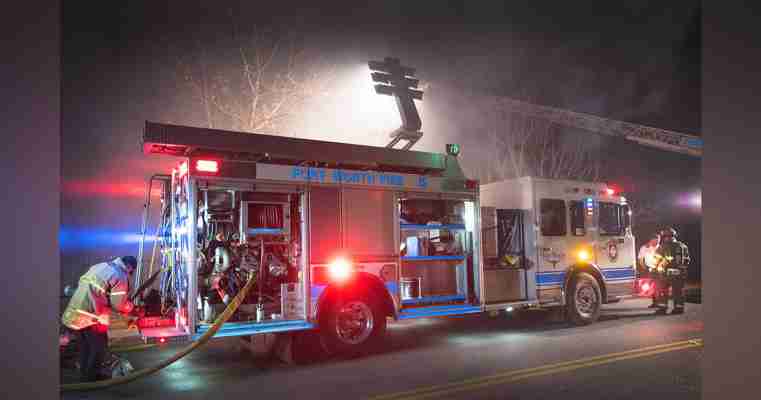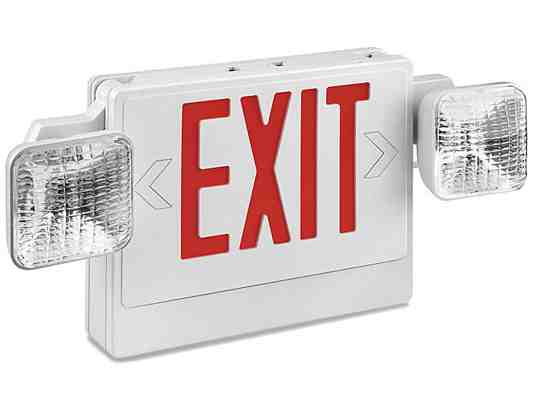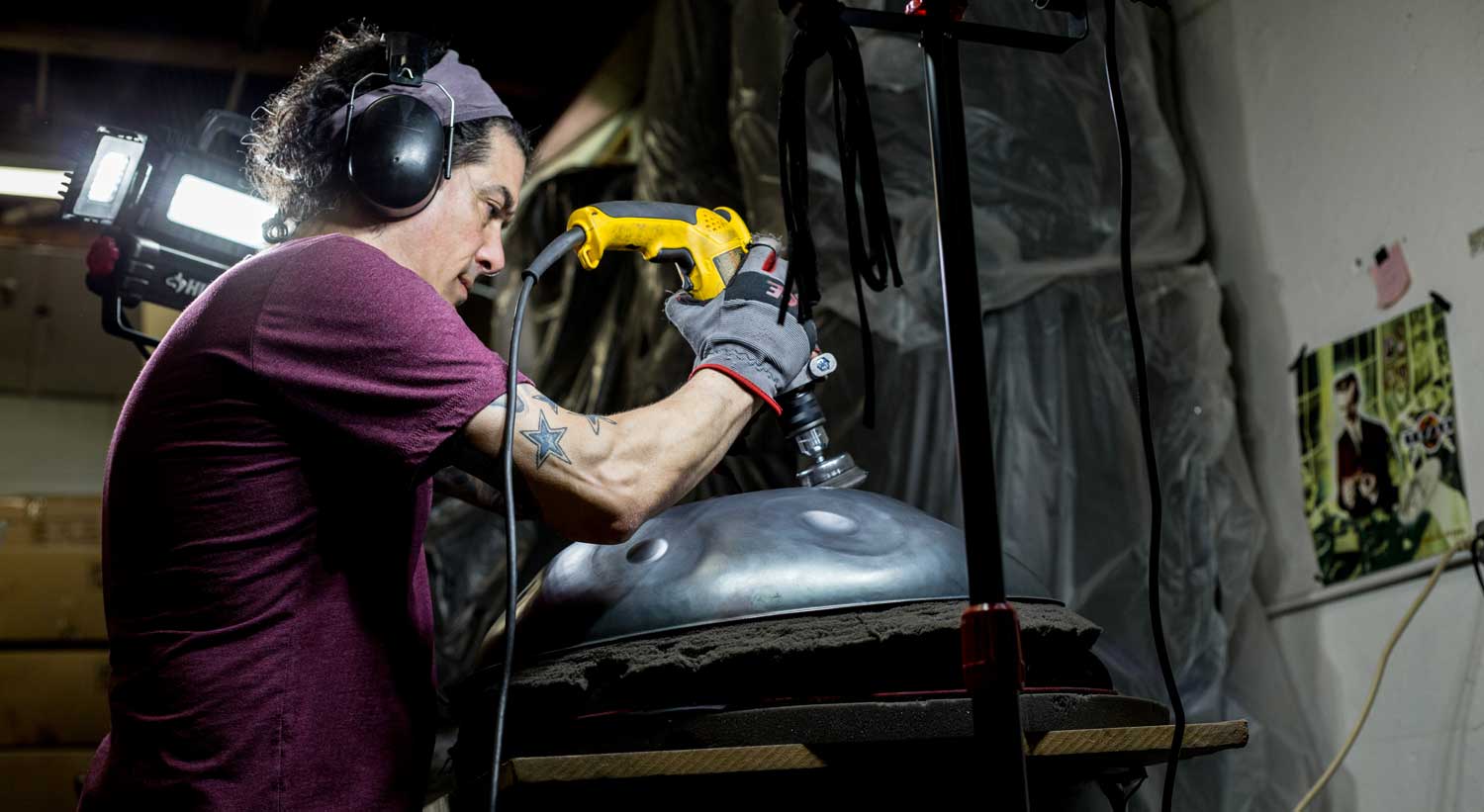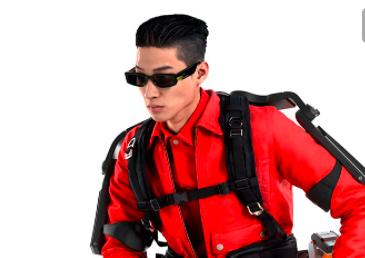Emergency Lighting: On Scene
Modern fire apparatus are covered with numerous flashing and blinking lights of various colors. The lights are designed to warn motorists of the need to yield the right of way when the unit is en route to an emergency and, once the unit is on scene, to warn approaching motorists of their presence in what is often an unexpected location that could impede normal traffic flow.

With the development of LED lighting technology, those warning lights have become physically smaller and draw less electrical power than conventional technology. Yet, LED warning lights are much brighter than the revolving, rotating, oscillating and blinking emergency lights of years ago. The intensity of modern LED lighting is difficult to miss for drivers who are looking through their vehicle’s windshield and paying attention to their surroundings.
It is important to remember that far too many drivers are distracted, drunk, drowsy and/or drugged (we call them “D” drivers) and frequently don’t react properly to unusual situations on the highway. No matter what you do with emergency lighting, it’s impossible to prevent all struck-by-vehicle incidents that involve emergency vehicles. The idea is to improve the odds through a system of training for your personnel, proper procedures, cooperation and collaboration between responding agencies, and the best arrangement of high-visibility graphics and warning lights.
Specify, retrofit, upgrade
Remember, emergency lighting laws are dictated at the state level. Each state has regulations that outline which vehicles can have emergency lights, how many and what type of lights are permitted, and what color, flash rate and intensity those lights can emit. Some states also outline when those warning lights can be used or displayed.
Be sure that whatever lighting project that you are involved with is permitted within the laws and regulations of your state. For projects that involve fire apparatus, consult and follow the most currently available NFPA standard that applies to your type of vehicle. NFPA 1901: Standard for Automotive Fire Apparatus generally is the recognized consensus standard that provides guidance on the minimum requirements for emergency lighting on fire apparatus. The final emergency lighting arrangement on a new fire apparatus usually is a blend of NFPA standards, the applicable state laws and the preferences of the fire department that’s ordering the rig.
Many apparatus committees spend considerable time on developing very specific details for emergency warning lights that are on the front of fire apparatus that are intended to call for the right-of-way while responding to emergencies. However, they often leave the specifications for warning lights on the rear to the apparatus manufacturer and the minimum requirements that are outlined in the NFPA standards.
In addition to getting to the emergency scene, you also want the most effective warning lights and protection when your unit is parked at the scene in all types of ambient lighting and weather conditions. In the case of highway incidents, you also want to consider how your apparatus typically will be parked at the incident, including when the unit is stopped on an angle to provide a block for the work area. What will motorists who approach your apparatus see from a distance and as they get closer to the incident? How will ambient lighting bright and sunny daylight, low light after dark, and reduced visibility because of snow, fog or heavy rain conditions) affect the conspicuity of your rig for motorists?
Many modern rigs utilize various flat-face warning lights on the rear of the apparatus. The rig’s brake lights and turn signals often compete with flashing warning lights for drivers’ attention. Drivers who approach or follow a rig that’s arriving at an incident scene often won’t recognize the brake lights or turn signals that indicate that your apparatus is slowing and/or turning to park. Today’s emergency warning light technology can dim warning lights temporarily when brakes are applied and synchronize specific rear-facing warning lights to act as brake lights, to allow drivers who are behind the unit to recognize that the rig is slowing or stopping. That feature can be particularly critical when the apparatus is responding to an incident on a high-speed, limited-access highway—for example, when an emergency vehicle and the motorists who are following the rig are traveling at highway speeds in the far-left lane, and then, suddenly, the emergency vehicle starts to slow dramatically to position at an incident scene. Many struck-by-vehicle crashes that involve fire apparatus occur in exactly this type of scenario. Motorists don’t expect a rig to stop on the highway and aren’t able to detect brake lights coming on with the other high-intensity, flashing warning lights on the rear of the rig.
Once the rig is stopped at a highway incident, many fire department procedures call for the unit to be parked at an angle to block for the work area. Parking the rig at an angle also conveys to approaching motorists that your unit is stopped, parked and not moving. When specifying the emergency warning lights on the rear of the apparatus, consider what approaching motorists will see from a distance when they draw near to an apparatus that’s parked at an angle. Those flat-faced warning lights that are on the rear of the rig now are off-center and aren’t directly facing approaching traffic. In some cases, depending on the type of warning light fixture, a rig’s emergency lights might not be as visible to approaching motorists. The best solution is to include warning lights on the rear that cover angles or offer 360-degree visibility. That way, the angle of the parked unit doesn’t diminish the conspicuity of the warning lights. Rear-facing warning lights also should be positioned as high as possible on the rig, to be more visible from a longer distance for motorists who approach an incident.
On scene
Once your unit is parked at the incident, the purpose of the warning lights is to provide advance warning that something unusual is going on up ahead, that drivers need to move over or slow down, and to pay attention to any temporary traffic control devices and emergency personnel who are manually directing traffic. Many fire departments include illuminated traffic arrow devices on the rear of the apparatus to assist with directing traffic. Unfortunately, some of those arrow devices are mounted too low on the back of the apparatus, or they might be obscured by hose, tarps, netting or other tools. Some of those arrow devices also are too small to be effective from a distance for traffic that’s traveling at highway speeds with lots of flashing lights and slowing traffic.
It is a good idea to include arrow devices on the rear of your rig, but they should be as large as possible and mounted as high as possible, preferably above the hosebed on standard engines. Additionally, look into mounting the arrow device in a manner that allows the arrow to swivel to face oncoming traffic directly when parked at an angle. Some fire departments have large, full-size arrow/message boards on fire apparatus. These are some of the most effective temporary traffic control devices for motorists who are paying attention to where they are going. Some fire departments have additional arrow devices on both sides of their apparatus to address the conspicuity of the rig when it’s parked at an angle in either direction.
The point is: Apply the same time and effort to thinking about and designing rear-facing warning lights for the way that you park your rig at an emergency scene as you do for specifying the warning lights on the front of the rig.
Dimming: A bright idea
Many drivers complain about emergency warning lights being too bright at an incident scene at night or in low light conditions. The situation becomes worse when multiple emergency vehicles are parked in the same area and have every warning light on each unit activated at maximum intensity. With red and blue warning lights flashing on multiple vehicles, what most people see from a distance is a purple blob of light ahead. Furthermore, drivers find it more difficult to see where they are going as they get closer to the scene, to the point that it becomes almost impossible to see pedestrians or emergency personnel who are moving on the ground around the apparatus.
LED technology can be programmed to dim some emergency lights and slow the flash pattern after dark to provide advance warning but with less intense glare. Newer apparatus are programmed to automatically shed some lights, such as forward-facing white lights, when the unit is put into Park. On older units, the driver/operator must manually adjust the warning lights. Either way it’s a good practice to adjust on-scene warning lights.
The next edition of NFPA 1901 might include a new mode for emergency lighting in addition to the “responding/calling for the right of way” and “stopped/blocking” modes that already are in the standard. The new mode being considered and discussed will be for apparatus that are “stopped/blocking at nighttime” and might call for dimming and a slower flash pattern for the warning lights. This nighttime stopped/blocking mode that has reduced intensity and a slower flash pattern already is used by law enforcement on some newer patrol cars.
Modern fire apparatus also is equipped with an abundance of LED scene lighting, so a single engine has the capability to light a football field. It is advisable that when scene lighting is used to illuminate the work area that the lighting be positioned so that it doesn’t blind drivers. If you’re operating on a highway, you might not need to illuminate the traffic side of your blocking unit. Cut off any white scene lighting that isn’t needed to illuminate the work area. Aim light towers at the work area and only activate the number of light fixtures that are needed for the incident scene.
Quick, safe and secure
Under the best of circumstances, on-scene safety at roadway incidents is a difficult goal to achieve. The situation is more challenging when your crew and apparatus are exposed to multiple “D” drivers.
Emergency warning lights are intended to help your crew get to an incident quickly and safely and, once at the scene, to secure the work area and to protect your crew and the victims who you were dispatched to assist. Professionally designed and utilized emergency warning lights help to provide that protection while not contributing any additional scene-visibility hazards for motorists.
Total Fire & Safety Inc. :: Emergency Lights
Emergency & Exit Lighting Emergency lights are the most neglected piece of life safety equipment in a building. Often times people overlook emergency lighting until they are in the dark. Emergency lighting is comprised of lights, illuminated exit signs and combination exit sign and lighting units. Emergency lights have their own power supply which allows them to mark the way out of a building in an emergency. If your lights are not properly maintained to provide 90 minutes of illumination, your customers and employees safety may be in jeopardy. It is a natural extension to have your emergency lighting inspected the same time the technician is inspecting your company’s fire extinguishers. We offer maintenance and inspection service on previously installed lighting systems. We test and inspect everything from the casing to the battery. Our technicians are knowledgeable about: Battery Shelf Life
Memory Rechargeability
Terminal Voltage
Current Draw
Temperature Effect
Brownout Sensitivity Exit & Emergency Light Inspections Include:
Ensure emergency light location is in code compliance
Inspect for proper mounting of the exit and emergency lights
Emergency light inspected for cracks, corrosion, loose or exposed wiring
Bulbs are checked for burnouts and replaced at time of service.
Units are electronically tested for accurate amp and voltage readings.
Replace deficient batteries at time of service.
Upon completion of inspection units are labeled detailing the inspection
Your One-Stop Shop Complete your Total Fire & Safety system with a variety of safety equipment. There's no need to call multiple contractors. Total Fire & Safety is the single source for every aspect of your fire protection system. Maintaining your exit and emergency lights will help provide your employees a safe exit in the case of an emergency. NFP / OSHA Compliant Like fire extinguishers, emergency lighting is required to be inspected and serviced in accordance with National Fire Protection Association (NFPA) Pamphlet 101 - "Life Safety Code" and OSHA 1910.37(b) 1 and 2.
Exit and Emergency Lights
It’s An Emergency! It’s Time to Exit the Building!

In life, the unexpected can happen at any time. Exit and Emergency Lights help in those unexpected situations. Picture this… The power in your building goes out. It’s an Emergency Situation. The building is filled with smoke, your visibility is limited, and people are starting to panic.
Does your business have an escape plan in place? Are the Exit Signs and Emergency Lights Working?
It’s always better to be prepared than to be caught off guard. During power outages, Exit and Emergency Lighting helps safely guide employees and guests out of your building. When smoke limits your vision, your exit and emergency lighting is 100% critical to guiding you to safety. Emergency Lighting also aids in reducing injuries, preventing panic, and saving lives.
When was the last time your Exit and Emergency Lighting was inspected?
Far too often Exit and Emergency Light Service, Maintenance, and Inspections falls to the wayside. FireGuard will ensure your exit and emergency lighting is properly serviced, fire code compliant, and will work in the event of an emergency.
The FireGuard Team performs complete E-Light service and maintenance as listed in NFPA Life Safety 101. We will check all batteries and bulbs and make sure your Emergency lighting will operate for 90 minutes.
We offer a complete worry free process. One less stress. One less headache.
New Emergency Lights, Lighted Exit Signs, and Replacement Parts
FireGuard stocks exit and emergency light replacement bulbs, replacement batteries, signage, New Exit Lights, New Emergency Lights, and New Combination Exit and Emergency Lights. We also have Exit and Emergency Lights with standard options, high end options, weather-resistant options, and wet-location options.
FireGuard is your complete source for Exit and Emergency Lights and Exit and Emergency Light Service and Maintenance. For FAST onsite service, call the experts at FireGuard.
Do you have questions about Exit and Emergency Lights? Questions about Local Omaha Fire Codes? Call FireGuard today!
Is it time for your annual Emergency Light inspection? FireGuard is ready to make sure your business is code compliant.
FireGuard offers a wide range of fire safety products and services, including fire extinguishers, fire alarm systems, fire sprinkler systems, restaurant systems, special hazard systems and exit/emergency lighting systems.


![31 Best IPTV Services for FireStick, Android TV, PC [Dec 2021]](https://www.lampsofbible.com/storage/upload/Images/_1639646173_nXrO23JGnM.jpg)





